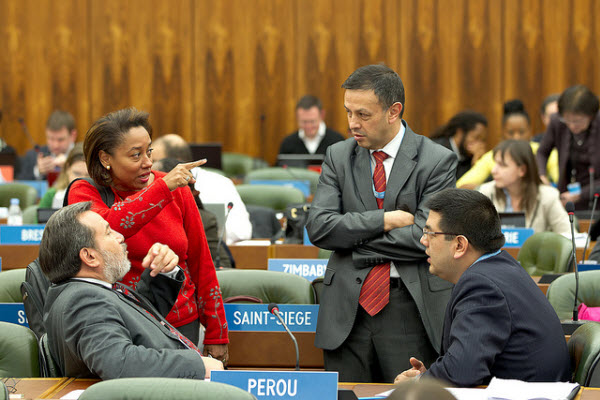
Overcoming years of stalemate, delegates to the World Intellectual Property Organization’s General Assembly have agreed to negotiate a proposed treaty on genetic resources and related traditional knowledge (TK), which are often key components in both traditional and new medicines.
In a statement issued Friday, WIPO’s General Assembly agreed to begin negotiations on the draft international instrument and to conclude the talks by no later than 2024.
The breakthrough is highly significant because talks over proposals to require patent applicants to declare their use of indigenous resources and knowledge, among other measures, have been languishing in a WIPO committee for decades.
Indigenous genetic resources, including plants, animals and microorganisms, and related “traditional knowledge” are scientifically valuable to life sciences research and have been the basis for many modern drugs, from artemisinin-based anti-malarials like Coartem® to anti-parasitics that treat onchocerciasis, known as river blindness.
[huge_it_slider id=”15″]In a meeting from 30 May to 3 June, the WIPO Intergovernmental Committee on Intellectual Property and Genetic Resources considered a draft working document, developed by WIPO’s secretariat, that would have called for patent applicants to declare any such resources that are used in new patent applications that are registered in WIPOs global registry – but at the time the discussions were inconclusive.

Negotiators would, however, now consider a mandatory “patent disclosure requirement” when patent applications are made for inventions that involve the use of genetic resources, along with addressing questions of access, use and benefit-sharing.
WIPO says proponents of such a treaty argue it would “harmonize diverse national systems, foster the sustainable development of Indigenous and local communities, provide legal certainty and predictability for businesses, and improve the quality, effectiveness and transparency of the patent system.”
Hailed as a breakthrough
WIPO Director General Daren Tang hailed the breakthrough as an “important step” and said the UN agency’s secretariat would provide “full support” to delegates as they try to overcome the significant gaps that remain among nations over some of the key issues.
“Today is a triumph of multilateralism, of us as a General Assembly, moving together as a community to make a difference for people everywhere,” Tang said in a statement. “Of course there are disagreements, there will be divergences. This is just the beginning of a whole new set of conversations.”
Tang described the proposed treaties as more than “mere pieces of paper” because they would provide concrete help to people around the world. WIPO acts as a global forum for intellectual property policy, services, information and cooperation.
Moldova’s UN Ambassador in Geneva, Tatiana Molcean, who chaired the WIPO Assembly, which concluded Friday, said she was proud of the “difficult decisions” it made in agreeing to move ahead with the proposed treaties based on “great understanding and respect for each other’s positions.” Around 900 delegates from among WIPO’s 193 member nations attended the July 14-22 assembly.
“After years of negotiations, it was mere reverence to see, as Chair of #wipoGA, member states come together to take their negotiations towards a final resolution,” she tweeted.
Streamlined IP Registration ntellectual Property Procedures for Designers
The WIPO Assembly also approved a decision to commence intergovernmental negotiations over a second proposed international legal accord on design law. This is intended to offer designers easier, faster and cheaper means of registering IP, and ensuring its recognition, in home markets and abroad, according to WIPO.
Work to simplify procedures for the IP protection of industrial designs was initiated in a WIPO standing committee on the law of trademarks, industrial designs and geographical Indications as far back as 2006.
The new accord, if approved, could also have implications for new health technologies, from diagnostics to cancer treatment.
Three years ago WIPO was part of a symposium with the World Health Organization and World Trade Organization on cutting-edge health technologies, such as gene editing therapies for cancer, that focused on ways of improving the international IP system to drive innovation and bring people needed therapies.
The proposed treaty on design law aims to eliminate bureaucratic red tape in ways that would particularly help smaller-scale designers in low- and medium-income countries who have less access to legal support for registering their designs overseas.
WIPO says data show the design industry accounts for 18% of employment and 13% of GDP in Europe, indicating the benefits such a treaty could have in developing economies where less or no similar data is available.
“The benefits of a vibrant design sector go far wider than GDP,” WIPO said. “Design can support efforts in education and sustainability, and can support community building.”
Image Credits: @Tatiana_Molcean, Photo: WIPO/Berrod.
